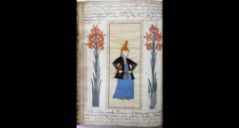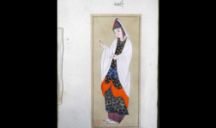1665 - Vermeer and the admiration of the Ottoman Empire
Our Girl first comes to life with the brushstrokes of master painter Johannes Vermeer in his studio in Delft. The year is 1665, and she comes to life slowly but surely with each layer of carefully applied oil paint; first her nose, then her lips, and subsequently her eyes. He paints her in what historians would later call the “Golden Age” of the Netherlands. But more on that later. Let’s delve into the mind of Johannes Vermeer in creating the identity of the Girl with Pearl Earring.
This first instance of cultural appropriation is typical for the painting traditions of the Dutch Republic. When Vermeer visualizes his Girl onto the canvas, she is a figment of his imagination based on other women in his life, a sitter, or perhaps a mixture of both. She is a tronie, a type of painting that does not focus on the identity of the sitter in the way a portrait would. What stands out, in our story of appropriation at least, is that the Girl is painted wearing Ottoman clothes. At the time, the Ottoman Empire and Dutch Republic had a close diplomatic relationship, with the Ottomans being the first to recognize Dutch independence from Spanish rule. This moment in time is greatly reflected in the way Vermeer incorporates Ottoman culture to become part of his Dutch paintings.
With her turban (see fig. 1 and fig. 2), Vermeer uses the styles of the Ottoman empire to show a high regard for these aesthetics within the Dutch upper middle class. She would represent, for whoever bought the painting, a knowledge of the world beyond the lowlands. Furthermore, she represents the value of accepting foreign cultures within the Dutch Republic. Vermeer uses these images of wealth and importance that are linked to the Ottoman empire to symbolize both an imperial friendship as well as the power the Dutch Republic is beginning to gain because of its identity as worldly and tolerant.

